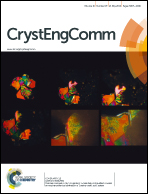Manganese dioxide core–shell nanowires in situ grown on carbon spheres for supercapacitor application
Abstract
A manganese dioxide (MnO2) core–shell nanostructure has been in situ grown on carbon spheres to form a core–shell MnO2–MnO2/C composite electrode material as a supercapacitor via an effective two-step hydrothermal method. Such a nanostructure enhances the specific surface area of MnO2, and effectively decreases the ion diffusion and charge transport resistance in the electrode reaction. The morphology and structure of the as-prepared samples were characterized by scanning electron microscopy (SEM), transmission electron microscopy (TEM), X-ray diffraction (XRD) and Fourier transform IR (FT-IR) spectra. The electrochemical behavior of the as-prepared electrode was evaluated by cyclic voltammetry (CV), electrochemical impedance spectrometry (EIS) and chronopotentiometry tests in a 1 M Na2SO4 aqueous electrolyte. Results reveal that the prepared electrode exhibits good electrochemical reversibility, a high specific capacitance (225 F g−1 at 2 mA cm−2) and excellent cycling stability with a retention ratio of 90% after 5000 cycles.


 Please wait while we load your content...
Please wait while we load your content...